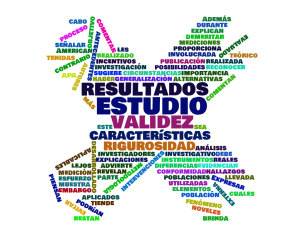Author: Raidell Avello Martínez – Translation: Erika-Lucia Gonzalez-Carrion
In a recent post I commented on the importance of expressing the limitations of the study and from the feedback received by colleagues, researchers and readers of the blog School of Authors of Communicate, I was asked to go deeper into the subject and to try the possible types of limitations. I will try to address this request, but I want to start by commenting that each study is different, so limitations, although generalities can be determined, may have particularities that are not associated with any variant or category that I will comment on.
Some methodological limitations
- Sample size: Are the number of units of analysis you use in your study determined by the type of research problem you are investigating? It should be noted that if their sample size is too small, it will be difficult to find meaningful relationships and generalizations from the data, since statistical tests usually require a larger sample size to ensure a representative distribution of the population and be considered representative of the studied groups of people, objects, processes, etc. Although, of course, sample size is less relevant in qualitative research
- Lack of available and / or reliable data: The lack of reliable data or data is likely to be an aspect that may limit the scope of your analysis, the size of your sample, or may be a significant obstacle to finding a trend, generalization, or significant relationship. Not only should these limitations be described, but it should also provide reasons for which you believe data is missing or unreliable, which will be very useful as an opportunity to describe future research needs.
- The lack of previous research on the subject: Referencing and criticizing previous research studies forms the basis of the literature review and helps to lay the groundwork for understanding the research problem being investigated. Depending on the scope of your research topic, there may be little prior research on your topic. Of course, before assuming that this is true, the main international databases should be consulted extensively. It is important to note that discovering such a limitation can serve as an opportunity to identify new gaps in the literature and consequently new research.
- Measurement used to collect data: Sometimes, after completing the interpretation of the results, it is discovered that the way in which it collected data inhibited its ability to perform a comprehensive analysis of the results. For example, not including a specific question in a survey that, in retrospect, might have helped address a particular issue that emerged later in the study.
Self-reported data: Self-reported data are limited by the fact that seldom can be independently verified. In other words, I refer to the case where the researcher has to investigate what people think about an issue, whether in interviews, focus groups, or questionnaires, at face value. These self-reported data may contain several potential sources of bias that you should be aware of and observe as limitations. These biases may become apparent if they are incongruent with data from other sources. These are: 1) selective memory, that is, remembering or not remembering experiences or events that happened at some point in the past; 2) “telescope” effect, where self-informants remember events that occurred once as if they occurred in another time; 3) attribution, which refers to the act of attributing positive events and results to the person himself, but attributing negative events and results to external forces; And 4) exaggeration, the act of representing outcomes or beautifying events as more significant than they actually were (Price and Murnan, 2004).
Possible limitations of the researcher
- Access: If the study depends on having access to people, organizations or documents and, for any reason, access is denied or limited in some way, the reasons for this situation should be described.
- Longitudinal effects: The time available to investigate a problem and measure the change or stability over time, is in most cases well limited, for example, because of the expiration date of project allocation, these limitations are advisable that are expressed in the research report or in a scientific article.
- Cultural limitations and other types of bias: Bias is when a person, place or thing is viewed or shown in an imprecise manner. Bias is generally negative, although one may have a positive bias as well, especially if that bias reflects its reliance on research that supports only its hypothesis. In reviewing your article, critically review how you have raised a problem, selected the data to study, what you may have skipped, how you have ordered procedures, events, people, or places.
Nobody expects science to be perfect and less the first time, and even their colleagues can be very critical, but no one’s work is beyond limitations. Our knowledge base is based on discovering each piece of the puzzle, one at a time, and the limitations show us where we need to make greater efforts in the next time. From a peer review look, I do not think the limitations are inherently bad, on the contrary, omitting them would leave hidden flaws that could be repeated, it is necessary to see them as an opportunity, even, the limitations of your study can be the inspiration of another researcher.
References
Price, J.H. y Murnan, J. (2004). Research Limitations and the Necessity of Reporting Them. American Journal of Health Education, 35, 66-67.

